
"Space is big. Really big. You just won't believe how
vastly, hugely, mindbogglingly big it is.
I mean, you may think it's a long way down the road to the chemist's, but that's
just peanuts to space."
- Douglas
Adams, Hitchhiker's Guide to the Galaxy
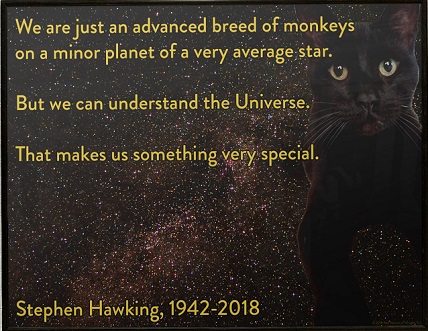
credit = Cats in Space Quoting
Scientists (FB page)
This page is one small part of Good Sites for Kids!
Look for ![]() to see what's been added lately!
to see what's been added lately!
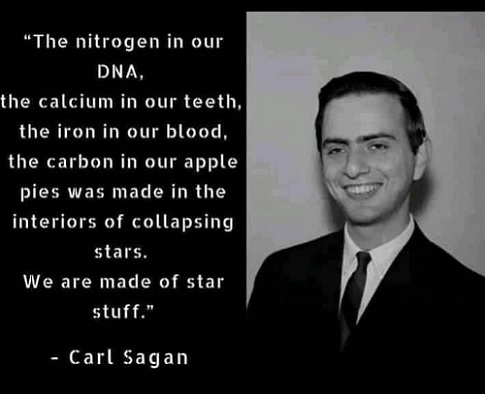
Butterfly Nebula captured by the Hubble space telescope
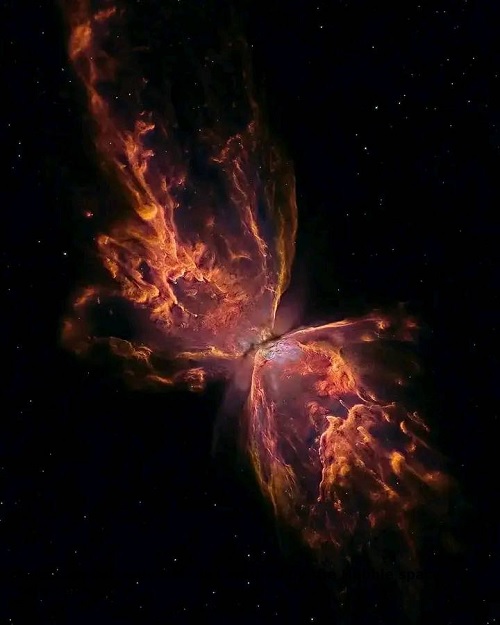
Astronomical Glossary Quick and handy online reference!
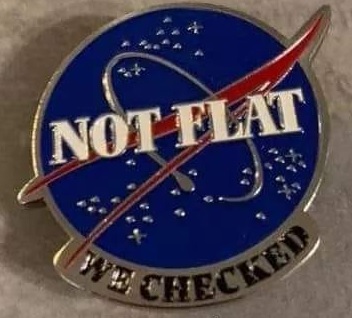
Astronomers Discover Rare Solar System
Where Planets Orbit in Mathematical Harmony
The “resonant” planets could provide insight about how
such systems form and evolve—and why our own solar
system is not synced up.
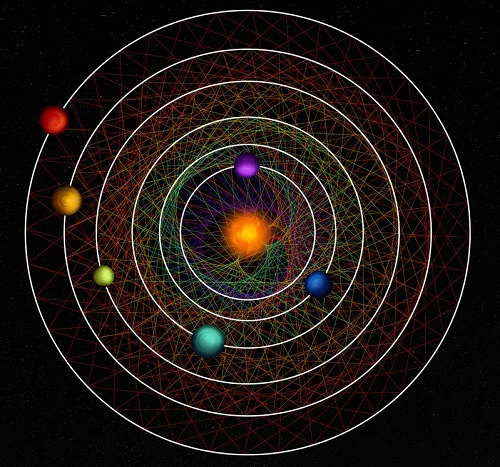
![]()
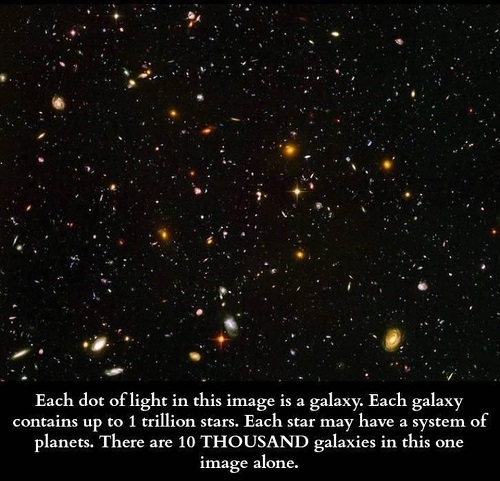
James Webb Space Telescope page
The Secrets Of The
Universe
"Explore the universe from quarks to quasars!"
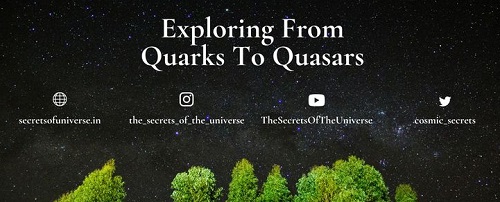
This excellent group of sites has amazing videos,
explains astronomy, astrophysics, photos suitable
for slide shows, so much to see!
Explanations of laws of physics, phenomena like
the Bernoulli Effect, comets, meteor, planets,
gravity waves, physics terms, and this:
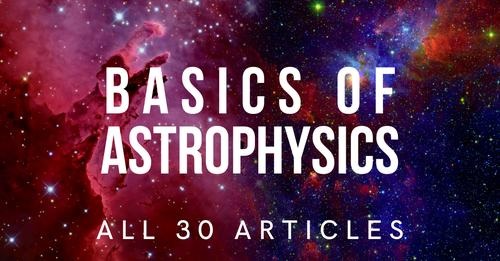
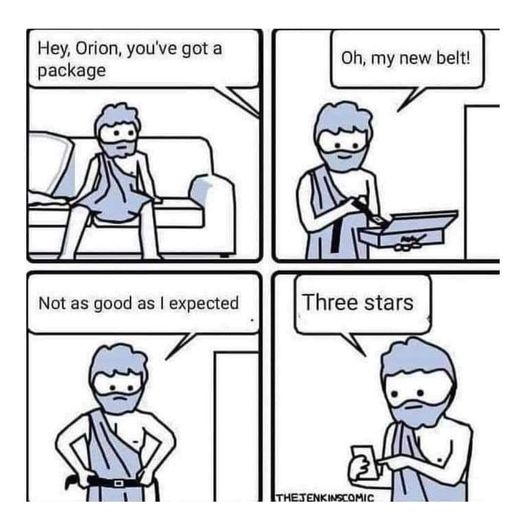
The dark side of the moon
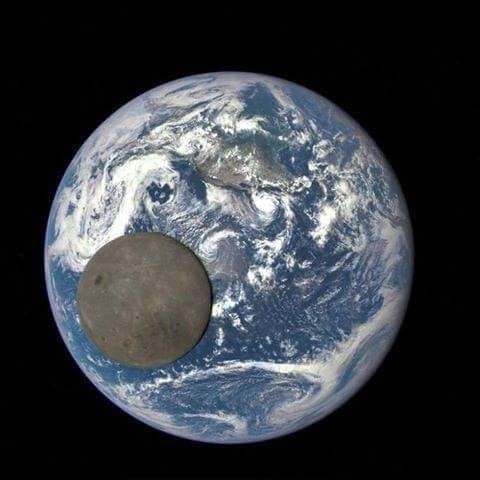
Rauf Ahmed of The
Science Site
·
The moon passed between Nasa's Deep Space Climate Observatory
and the Earth, allowing the satellite to capture this rare image of
the moon's far side in full sunlight. We normally don't see this side
of the moon, as the moon is tidally locked to the earth and doesn't
rotate.
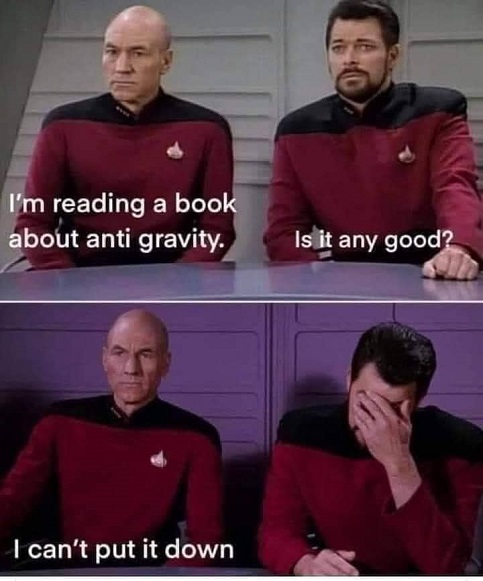
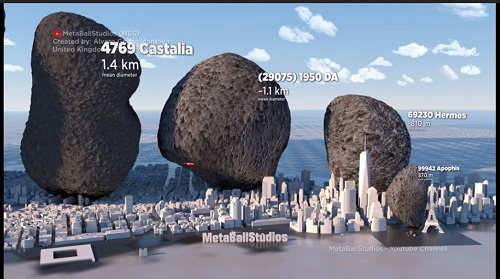
2:40 video slowly zooms out from a 4.9 meter rock to 939 km
Ceres! Includes other comets and asteroids, too.
Asteroids
vs Meteors vs Comets A short NASA YouTube
video explains the difference, history, meteor showers,
and meteorites. Good animation and narrative.
COMET, METEOR OR ASTEROID
- The REAL difference.
Similar to the previous site with more animation.
What Is a Barycenter? From NASA's kid-friendly Space
Place
explains what barycenters are and why they matter.
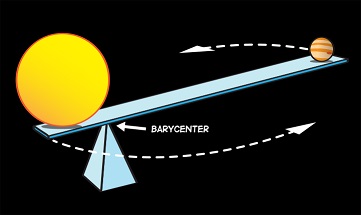
Nice explanations of centers of mass and centers of gravity.
Also discusses how barycenter mathematics helps the hunt
for new planets.
Viewing
the Lyrids
Yes, it's from 2020, it's still relevant, lots of
information with amazing zoom-in zoom-out animation
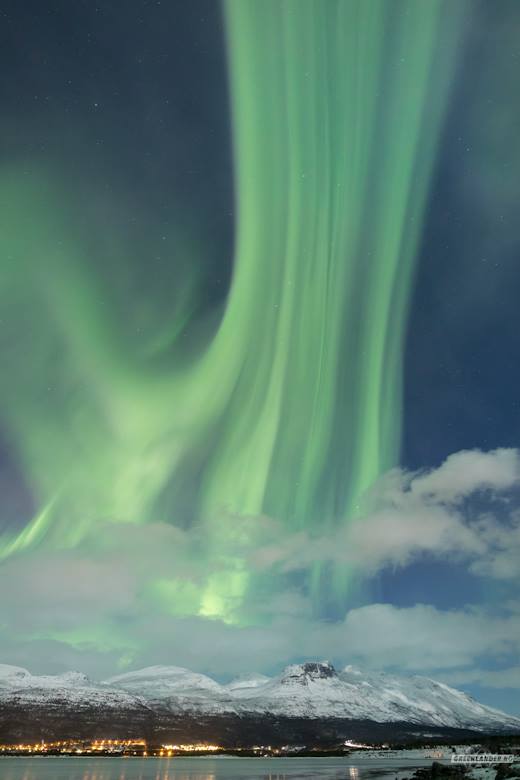
A crack in the Earth's magnetic field over the weekend
(not uncommon around the Equinox) allowed the Solar Wind to
pour in over Norway. The result? A fantastic display of the
Northern Lights, that look like it's almost flowing to the ground!
Very cool. (spaceweather.com) This image is from
Greenlander Tromsø. Check them out...great stuff!
Credit = Tony Pann, Meteorologist at WBAL-TV
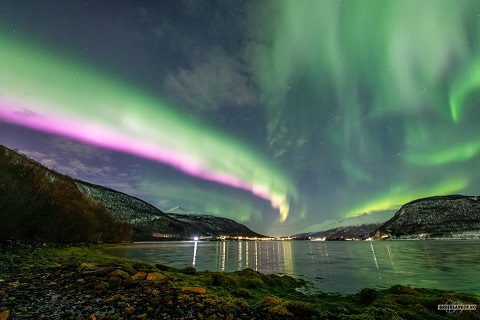
This image is also from Greenlander Tromsø.
credit: American Meteor Society
Thanks to all who shared this. It helps us to understand why
ancient peoples who lived way up north believed in sky gods.
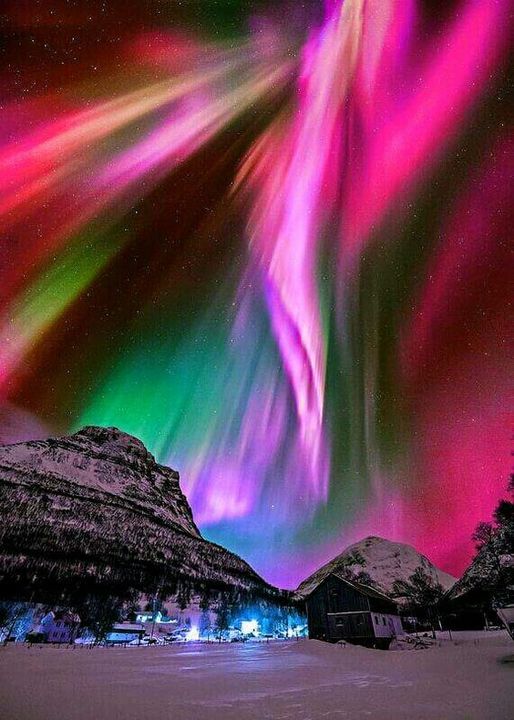
credit:Maura Bertotti & Dorothy Rochester
. Meanwhile, in Norway . . .
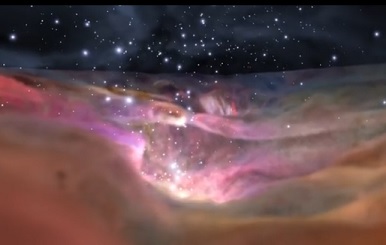
Flight Through the Orion Nebula in Visible and Infrared Light [Ultra HD]
"NASA has released a rather wondrous visualization of what it would be
like to fly
through the Orion Nebula. Using data from the Hubble and Spitzer space telescopes,
scientists stitched together a 3D fly-through of the famous nebula, which
is in the process
of forming stars. We are treated to glorious glowing clouds being heated by
radiation,
huge envelopes of gas around disks of new planetary systems, and new stars
being born.
The Orion nebula is about 1,344 light-years away, and just 2 million years
old
– a blink of an eye in cosmic terms.
Of course, we didn’t actually send those telescopes through the nebula
to make the video.
Instead, using imagery from the telescopes and “Hollywood techniques",
according to NASA,
the Space Telescope Science Institute in Baltimore, and the
Caltech/Infrared Processing and Analysis Center (IPAC) in California produced
the
3-minute video. You can check it out below. It has a rather nice musical backdrop,
so you might want to turn your sound on too." (text from IFLS article)
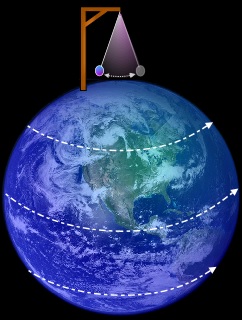
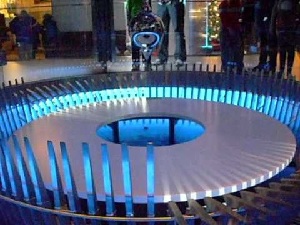
"Due to the pendulum's inertia, once started, it will
oscillate in the same plane forever. However, since
the pendulum is on Earth which rotates about its
own axis, from our rotating point of view the
pendulumís plane of oscillation seems to be whatís
rotating. The period of rotation depends on your latitude
too: at the North Pole the pendulum rotates once a day
but at the equator it doesnít rotate at all!"
Texas A&M Physics and Astronomy
Largest
Batch of Earth-size, Habitable Zone Planets
From the NASA site comes all the graphics, all the information, and all the
wonder of the seven planets of the TRAPPIST-1 system. It's around 40 light
years away, about 10 times the distance from here to Proxima Centauri, so
NASA's Spitzer Space Telescope and ground-based telescopes are the best there
is for a while! Enjoy the wonderful graphics! A little English lesson: What
does TRAPPIST mean? What's an acronym?
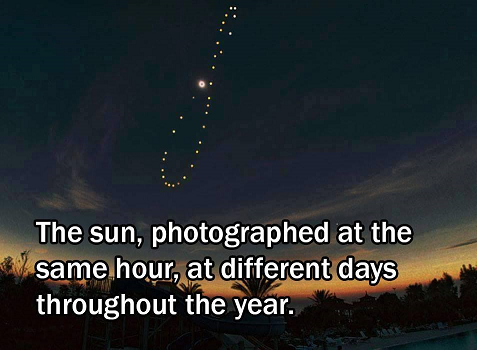

The World Clock
– Time Zones from Time and
Date. A site both amazing and superb.
Look towards the bottom of the page to see UTC (GMT/Zulu)-time. UTC (GMT/Zulu)-time
= London, UK time.
Use their Time
Zone Converter to find your local time from the time in London.
100,000 Stars is one of 400+ projects being developed at chromeexperiments This one give a fast tour of the planets, Oort Cloud, Voyager, what a light year's distance looks like, "nearby" stars, and stars named by astronomers. All set against the stunning background of the Milky Way with eerie music.
![]() Aciqra "(uh-SEE-kruh)
is a free and open source virtual sky map and
planetarium which tracks and displays astronomical bodies including planets,
nebulae and stars to an accuracy of a fraction of a degree for thousands of
years into both the future and the past. It's software that generates a virtual
sky so you'll always know exactly what's up in the real one. Aciqra includes
and displays a wide variety of different objects. It tracks and simulates
solar system objects like the Moon, the Sun, the planets, asteroids and comets.
It also includes a large database of stars and various other deep space objects
including star clusters, nebulae and galaxies." It is really pretty cool.
It would have a multitude of uses. One use would be to teach older kids and
secondary/university students more about astronomy. This is really professional-level,
but easy to use. Need help? There's
a page for that. Their Sourceforge project page is here.
Aciqra "(uh-SEE-kruh)
is a free and open source virtual sky map and
planetarium which tracks and displays astronomical bodies including planets,
nebulae and stars to an accuracy of a fraction of a degree for thousands of
years into both the future and the past. It's software that generates a virtual
sky so you'll always know exactly what's up in the real one. Aciqra includes
and displays a wide variety of different objects. It tracks and simulates
solar system objects like the Moon, the Sun, the planets, asteroids and comets.
It also includes a large database of stars and various other deep space objects
including star clusters, nebulae and galaxies." It is really pretty cool.
It would have a multitude of uses. One use would be to teach older kids and
secondary/university students more about astronomy. This is really professional-level,
but easy to use. Need help? There's
a page for that. Their Sourceforge project page is here.
All (known) Bodies in the Solar System Larger than 200 Miles in Diameter. 88 known objects in our Solar System that are larger than 200 miles in diameter on one large, extra wide graphic. Pretty interesting for the art alone, and the information is accurate at this time.
Ancient Astronomy of the North American Indians from the StarTeach Astronomy Education Program. Examples of astronomy as practiced by Native Americans of several different nations: the Anasazi and Pueblo peoples of New Mexico; Medicine Wheels in the Bighorn Mountains of Wyoming and many others in Alberta and Saskatchewan; the Skidi band of the Pawnee Nation; and the Chumash people in California.
Ask an Astronomer From CalTech's Cool Cosmos site. Windows Media or QuickTime videos answering common kid questions.
†
Asteroid 2011 MD is about 10 metres long, and it barely missed Earth in June 2011. Here's a great animation of its path! More information here.
†
Astro for Kids† from Astronomy.com.† Facts on the Solar System, navigating by the stars, and more.†For upper elementary and above. Cool photos, too.
![]() ASTROfan
has nearly 200 pins worth of cool astronomy facts. These include star and
planet anatomy, Solar System, Kuiper Belt, Oort Cloud, neutron stars, black
holes, how the Sun works, stellar evolution, spaceship design, fact graphics
for all the planets, galaxies, and much more. Very nice learning aids!
ASTROfan
has nearly 200 pins worth of cool astronomy facts. These include star and
planet anatomy, Solar System, Kuiper Belt, Oort Cloud, neutron stars, black
holes, how the Sun works, stellar evolution, spaceship design, fact graphics
for all the planets, galaxies, and much more. Very nice learning aids!
†
Astronomy for Kids† Easy to use, straightforward site with simple astronomy facts for kids.
†
 Astronomy
Picture of the Day also called APOD. From NASA. Every day a new astronomy
photo or painting, with a narrative under it. The photos are absolutely astounding,
breathtaking, stunning, magnificent! The site also has a Glossary, Educational
links/resources, more. Cruise the
Archives for many more pix!
Astronomy
Picture of the Day also called APOD. From NASA. Every day a new astronomy
photo or painting, with a narrative under it. The photos are absolutely astounding,
breathtaking, stunning, magnificent! The site also has a Glossary, Educational
links/resources, more. Cruise the
Archives for many more pix!
†
†
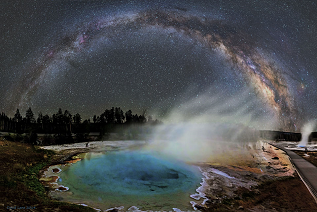 Astronomy Picture of the Day - 2014 August 27
Astronomy Picture of the Day - 2014 August 27
Milky Way over Yellowstone
Image Credit & Copyright: Dave Lane
Discover the cosmos! Each day a different image or photograph of our fascinating universe is featured, along with a brief explanation written by a professional astronomer.
†
AstroTour Solar system interactive virtual orrery from Gunn Interactive of New Zealand. "A free, educational, customizable, scriptable model of the solar-system. Have fun! Learn Something!" We took their intro tour and watched the retrograde orbits demo. Pretty cool. A good way to investigate the Solar System. Reddited.
†
AstroViewer "Your night sky map in the internet" This excellent interactive constellations viewer lets you see the names in Latin or English.
†
Atlas of the Universe This site rocks! "This web page is designed to give everyone an idea of what our universe actually looks like. There are nine main maps on this web page, each one approximately ten times the scale of the previous one. The first map shows the nearest stars and then the other maps slowly expand out until we have reached the scale of the entire visible universe." The site does a very good job of it, too.
Aurora over Finnish
Lapland New Years Eve
Original size = 2048x1365 pixels
Posted on reddit by Eddynstain
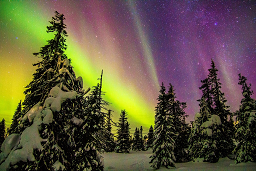
![]() A
Billion Degrees of Separation "We take the temperature of the universe
from absolute cold to 'absolute hot'. " 883 X 4000 graphic goes from
- 273.15C to 1.417x1032C (aka the Planck Temperature). Subdivided into Elements,
Living Things, Man-Made, Earth, Solar System, and Universe. So if you need
to know the boiling point of iron, the temperature range where tardigrades
can live, the melting point of butter, the temperature of lava, the surface
of Mercury at night, or the surface temperature of Sirius; they are all on
this chart. A BBC project via ScienceAlert.
A
Billion Degrees of Separation "We take the temperature of the universe
from absolute cold to 'absolute hot'. " 883 X 4000 graphic goes from
- 273.15C to 1.417x1032C (aka the Planck Temperature). Subdivided into Elements,
Living Things, Man-Made, Earth, Solar System, and Universe. So if you need
to know the boiling point of iron, the temperature range where tardigrades
can live, the melting point of butter, the temperature of lava, the surface
of Mercury at night, or the surface temperature of Sirius; they are all on
this chart. A BBC project via ScienceAlert.
†
'Black Marble' satellite images of Earth unveiled - in pictures "Scientists have unveiled a new image of Earth at night. A global composite image, dubbed Black Marble, was constructed using cloud-free night images from a new Nasa and National Oceanic and Atmospheric Administration satellite. It shows the glow of natural and human-built phenomena across the planet in greater detail than ever before." Ten images show pretty much all of Earth at night. Geography classes could work on identifying continents, countries, cities and towns, lakes, oceans, highways, oil fields, fishing fleets, etc.Credit: This slideshow is posted in the Science section of theguardian.
Blue Origin Crew Capsule Escape Test Goes Flawlessly The latest private attempt at operating a space vehicle is testing a brand new escape capsule! This eight-minute video covers most of the original movie and is much less complicated for munchkins. The new capsule concept is explained, too. "The private spaceflight company's New Shepard rocket and its capsule were both returned to ground after a successful test of its In-flight Escape system. An engine aboard the capsule blasted it away from rocket 45 seconds after launch."
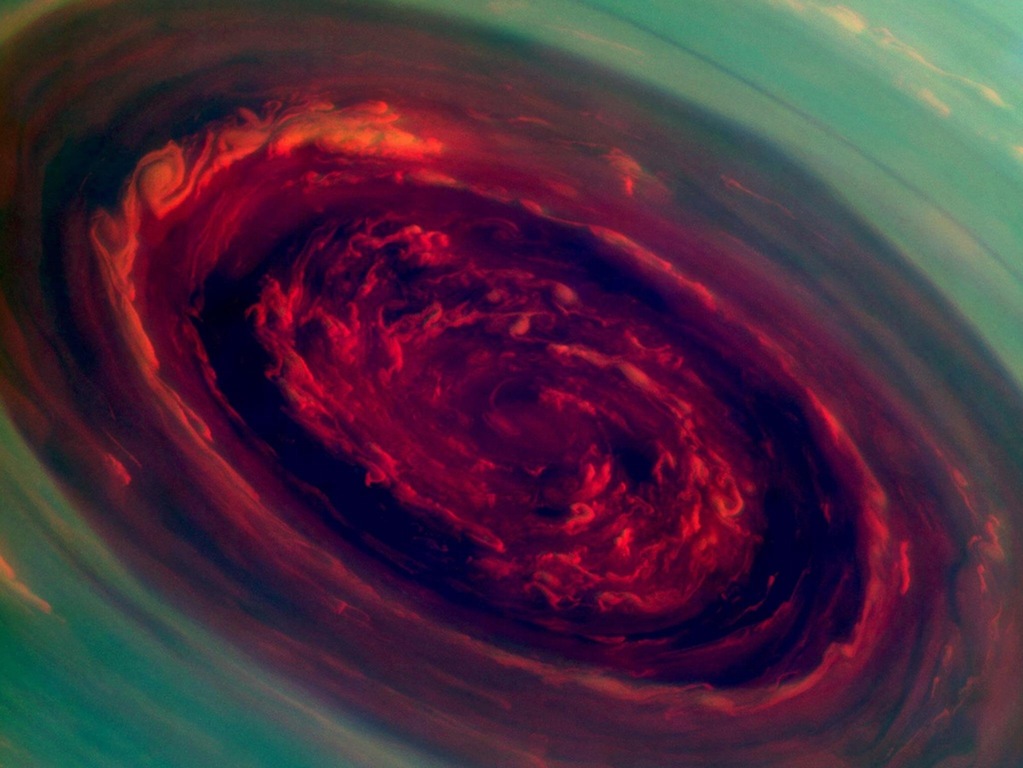
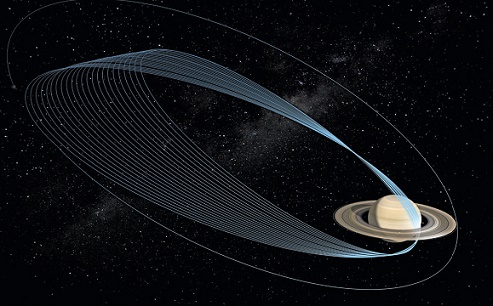
NASA’s
Cassini Mission Prepares for 'Grand Finale' at Saturn This is the central
point for dozens
of exciting links to resources, videos, photos, games, models, 3-D Interactives,
the parts of the Cassini-Huygens
spacecraft and what they do, the science of Saturn, its moons, and its rings.
The Resources section has
Fact sheets, printable materials, spacecraft models, and other resources about
the Cassini-Huygens mission.
The Galleries section has all kinds of photos and graphics, and LOTS of videos.
The Grand Finale Toolkit explains
the plan to fly the spacecraft between the rings and Saturn, to eventually
crash the spacecraft on Saturn itself.
Of course, the section has its own videos, graphics, etc. There is an awful
lot of material here!
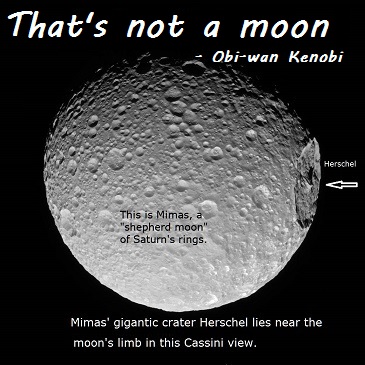
Catching
the Light renamed Astropix
Astrophotography by Jerry Lodriguss.
AWESOME photos will make you remember
the wonder that first drew you to astronomy.
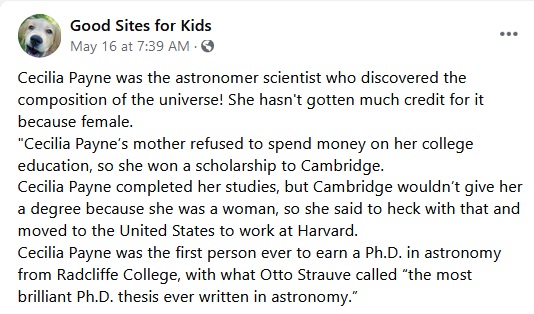
Snopes
discusses this statement.
†
![]() Celestia
Fantastically
cool download! "... The free space simulation
that lets you explore our universe in three dimensions. Celestia
runs on Windows, Linux, and Mac OS X. " Zoom between planets
and constellations, watch Deimos and Phobos fly across the face of
Mars, hundreds of other things to see! With data on every object you
look at. Download it at the above link or here
from SourceForge. Stupifyingly wonderful. (Celestia must be installed
on computers, it cannot be played online.)
Celestia
Fantastically
cool download! "... The free space simulation
that lets you explore our universe in three dimensions. Celestia
runs on Windows, Linux, and Mac OS X. " Zoom between planets
and constellations, watch Deimos and Phobos fly across the face of
Mars, hundreds of other things to see! With data on every object you
look at. Download it at the above link or here
from SourceForge. Stupifyingly wonderful. (Celestia must be installed
on computers, it cannot be played online.)
†
![]() Celestia
Motherlode is where you can download extensions,
add-ons, etc for Celestia.† If it's even possible to improve upon
Celestia, this is where to do it. There are some really great things
here! Watch the file size, some of these are fairly big for some
school computers.
Celestia
Motherlode is where you can download extensions,
add-ons, etc for Celestia.† If it's even possible to improve upon
Celestia, this is where to do it. There are some really great things
here! Watch the file size, some of these are fairly big for some
school computers.
†
Chandra X-ray Observatory from Harvard University. "Discover the images of the Chandra X-ray Observatory. Dive into the wonder of everything from Black Holes to X-ray Binaries. Below you can find various ways to find just the image you are looking for. " Browse images by category or date, or..."Explore the X-ray sky with an interactive Sky Map, and learn about Galactic Navigation. Constellations: Background information on selected constellations and links to objects observed within them. 3D Wall: Scroll through the entire library of released Chandra images in a quick-downloading 3d wall format with the Cooliris plug-in. Special Features: Collections of Chandra images to browse through in html & flash formats." Many other goodies as well. This is suitable for elementary through college, easily.
†
†
China Lands Rover on The Moon The Jade Rabbit lunar rover is rolling around Luna's surface. The first soft landing on the moon since the 1970s. China's first rover seems to be doing fine! Why Jade Rabbit? East Asian cultures do not have a Man in the Moon. They have a Jade Rabbit!
Clearest Way to Teach Moon Phases...EVER! From Science Teaching Junkie. "Essentially, this Moon Phase board allows students to visualize and better understand the cause of moon phases." Home made board with materials cost of about US$5. Explanations of terminology, how to use it, and materials list/instructions included. Plenty of photos to help you make your own. Completed board is modeled by an adorable young lady.
Constellation Hunt from KidsAstronomy is like a word search of the sky!
Constellation Links for Kids from Athropolis is a good list of astronomy sites.
Constellations from Chandra. "Background information on selected constellations and links to objects observed within them." We're giving this its own listing since constellations are a popular elementary school science item.
†
Constellations from Enchanted Learning/Zoom Astronomy! Their usual stellar treatment for elementary and middle school. Subscribe so they'll keep doing sites like these!
†
Constellations and their Stars Great resource site! Information about constellations, stars, much more, also has interactive sky charts.
†
Constellation Photos This site shows photos of the stars and the constellation outline. Lists both ancient Greek and "modern" constellations.
†
Cosmos4Kids! offers a lot of good basic information about astronomy in a highly organized site.
†
Dawn Spacecraft Begins Approach to Dwarf Planet Ceres from NASA and JPL. NASA's ion-powered Dawn spacecraft has entered an approach phase in which it will continue to close in on Ceres, a Texas-sized dwarf planet never before visited by a spacecraft. Dawn launched in 2007 and is scheduled to enter Ceres orbit in March 2015. Located in the Asteroid Belt, Ceres is round like a planet, not jagged like other asteroids. The included video explains ion engine propulsion, which has already let Dawn slow down to explore Vesta, and then speed up to head for Ceres.
Dawn Spacecraft Arrives at Dwarf Planet Ceres This Week Dawn has already visited Vesta and is moving up on Ceres, matching speeds to let Ceres' gravity bring it in. There's a great Ceres iconographic here. From Space.com
Living On Dwarf Planet Ceres in the Asteroid Belt (Infographic) Excellent infographic explains it all about Ceres. From Space.com
The Asteroid Belt Explained: Space Rocks by the Millions (Infographic) Great graphics! From Space.com
Dazzling
galactic diamonds shine in new Webb telescope image
Billions of new stars, thousands of new galaxies!
This presentation has 17 slides for us to see.
Dome of the Sky Lists constellations by northern and southern hemispheres and time of year. Has outline of each constellation and the story or myth behind it. Good resource.
†
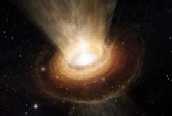 Dusty Surprise
Around Giant Black Hole "...dust is being pushed away from the
black hole as a cool wind — a surprising finding that challenges current
theories and tells us how supermassive black holes evolve and interact with
their surroundings."
Dusty Surprise
Around Giant Black Hole "...dust is being pushed away from the
black hole as a cool wind — a surprising finding that challenges current
theories and tells us how supermassive black holes evolve and interact with
their surroundings."
†
†
Earth as seen from the International Space Station – timelapse video "An extraordinary timelapse video created with pictures from the International Space Station shows Earth as it has never been seen before. The video, called Further Up Yonder, was made by Italian film student Giacomo Sardelli using Nasa stills. Sardelli calls the film a message from the ISS to all humankind." Credit: This video is posted in the Science section of The Guardian.
Earth in the Universe Nine-panel poster shows
where Earth fits in the map of the universe.
Starting with Earth and moving through successively
larger "maps", it will leave kids in awe. Link goes to
the poster, on imgur, where you can expand it even more.
![]()
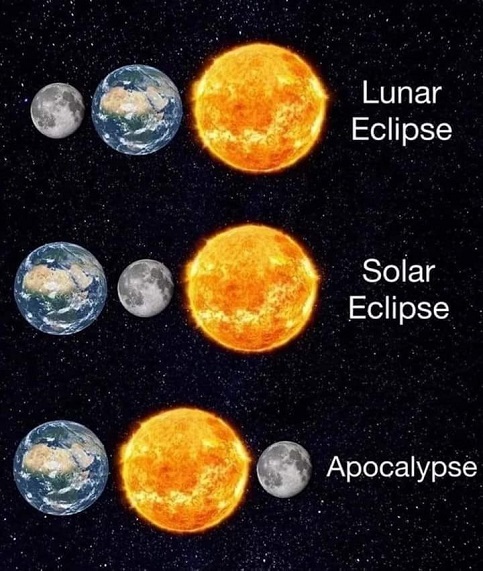
![]()
Saturn in Realistic VFX from ScienceClic
14:35 long video tour of Saturn!
"A short immersive experience to explore
Saturn and its moons. All visuals were
computer generated to replicate the look
of real photographs. The images and the
music were all created specifically for this
video."
Seasons
This great Australian site is one small part of a bigger
internet education complex called Scootle.
Seasons
is designed to teach middle schoolers and up about the
interactions among orbits, axis tilt, rotations, and sunlight.
Students manipulate orbits, tilt, rotations, daylight, etc. to make
seasons.
†
Earth's Seasons from Enchanted Learning. Find out about the Equinox,
the Solstice, and the seasons of the year at this fine offering.
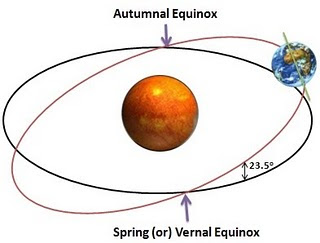
†
Every place on earth experiences a 12 hour day and a 12 hour
night
twice a year at the Spring and Fall Equinox.
Learn about Summer and Winter Solstices, and more about the
Spring and Fall Equinoxes, below:
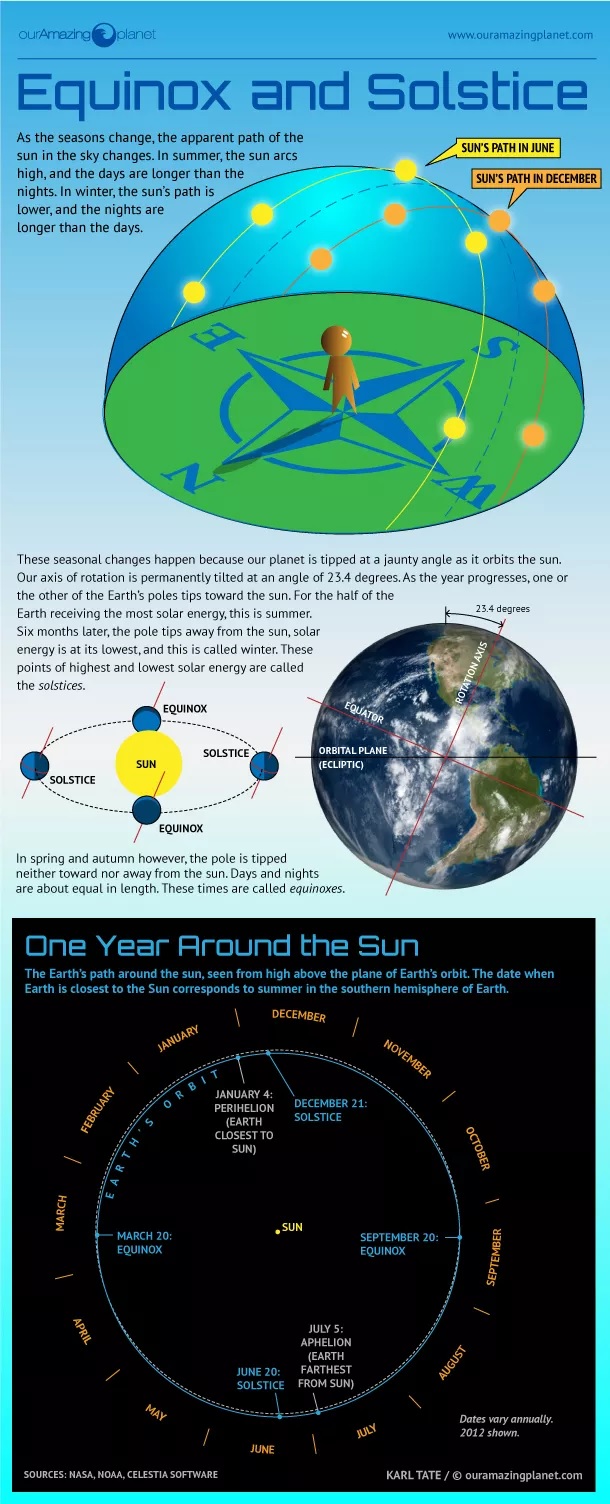
†Equinox:
Sun rises due east and sets due west from EarthSky
Also it's one of only two days a year when day and night are 12 hours each.
Another good, fact-filled equinox page with good graphics.
You just can't get enough knowledge!
Fact Monster's Solstice
for Kids Explains the solstice concept,
the changing angle of the earth, and solstice history and traditions.
8
Facts About the Winter Solstice You Need to Know
from MSN. Explains winter solstice. Compares and contrasts it
with summer solstice. Explains how they take place at the same
time on the same day. Explains the equinoxes. Plenty of
infographics to help learning.
The Total Solar Eclipse
of August 21, 2017 - fly along with the shadow! This video "follows"
the moon's shadow
as it sweeps over the surface of the USA on August 21, 2017. Production details
are in the end credits.
Check out http://www.eclipse2017.org for more details on the eclipse!
A button on the right side will show you to the minute where the shadow will
be as it cruises through the USA,
from Northwest to Southeast from Washington State to South Carolina!
Eclipse of August
21, 2017 This Vimeo video is seven minutes long, including credits.
There is a Download button in case you want to Save the video.
eSky The Electronic
Sky "Welcome to eSky, a site dedicated to the entire universe. Here
you'll find a whole range of articles covering cosmic phenomena of all kinds,
ranging from minor craters on the Moon to entire galaxies." This beautiful,
huge, well organized site covers everything. Mark Fisher does amazing work.
Every Single Satellite Orbiting the Earth
Click on the graphic to see this in all its fullsize glory.
†
Explore Mars! from NASA/JPL. Take the Curiosity rover out for a spin in this virtual adventure! Scale mountains, drive through large canyons and sand dunes, explore the Gale Crater. It can be slow to load depending on your connection speed and computer age. Worth the wait! See for miles across Mars as you drive the rover like a dune buggy.
†
Exploring Planets in the Classroom hands-on science activities This venerable Hawaiian site has hands-on activities and lesson plans! Now with volcano activities!
Eyes
on Exoplanets This NASA site will fly you to any planet you wish—as
long as it's far beyond our solar system. This fully rendered 3D universe
is scientifically accurate, allowing you to zoom in for a close look at more
than 1,000 exotic planets known to orbit distant stars. Requires a one-time
download of the app. Then, get out there and see what you can find!

†
Eyes on the Solar System from NASA Jet Propulsion Laboratory, California Institute of Technology. ""Eyes on the Solar System" is a 3-D environment full of real NASA mission data. Explore the cosmos from your computer. Hop on an asteroid. Fly with NASA's Voyager 2 spacecraft. See the entire solar system moving in real time. It's up to you. You control space and time." This is great! Think of a 3-D Celestia program, very hands-on and easy to use! Loved zooming around and rotating planets & moons. Needs the Unity Web Player to be installed.
"The Falcon has landed" | Recap of Falcon 9 launch and landing, 3:37 video. "On December 21, 2015, SpaceX's Falcon 9 delivered 11 satellites to low-Earth orbit and landed the first stage of the rocket back on land." Watch this and see what that looked like!
Fly Over Dwarf Planet Ceres 1:15 video with music. Downloads are available. "A new video animation of dwarf planet Ceres, based on images taken by NASA's Dawn spacecraft, provides dramatic flyover views of this heavily cratered, mysterious world."
"A selection of galaxies shown to the same scale"
doesn't begin to describe this giant infographic's
sublime awesomeness. We have a teeny copy
shown here. The thing will fill up your screen.
The wonder increases with the size.
There are control buttons in the original's upper
left corner. Go see!
†
Gaze
upon all of Mercury for the first time ever
Watch the closest planet to the sun as it rotates, in
high-contrast false color! "This video is based on images
taken by the MESSENGER probe, the first spacecraft to
actually orbit Mercury."
Globetarium "Know
the ecliptic, know the sky"
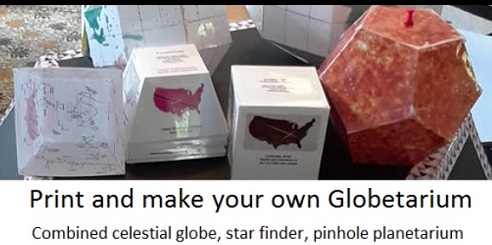
Frustarium star-finder, celestial globe, and pinhole planetarium
20 different printouts for you
Dodecatarium sit-under pinhole planetarium
Cubetarium stand-under pinhole planetarium
Star Quizzes and links
Gravity
from the NSTMF Lab "How
do celestial bodies warp
the fabric of space-time and interact with each other?" Explore.
Make your own objects in 2-D space! See how the big, massy
ones attract smaller ones. More mass = more attraction.
Click the Create Your Universe button. Read the Observations
when they pop up to learn more about gravity.
Gravity Wells This
large, well done PNG image explains the idea
of gravity wells in easy to understand cartoon form. It's from xkcd,
a well known ubergeek site with cartoons of interest to, well,
MIT/Caltech undergrads, shall we say. This one is appropriate for
kids old enough to grasp the concepts it explains, but we cannot
recommend you let your kids go to xkcd by themselves.
The Green Comet "Comet C/2022 E3 (ZTF), ...
Canon EF 100-400mm L IS II, 20x 30 sec, f/5.6, ISO-3200,
Celestron AVX mount, Stellarium and
the SAO database on
the Nexstar came in very handy to find the Comet."
credit = Martin Brown
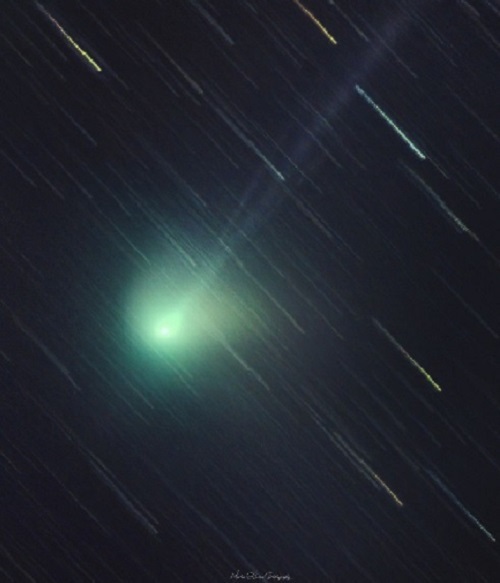
Horsehead Nebula (NASA
photo)
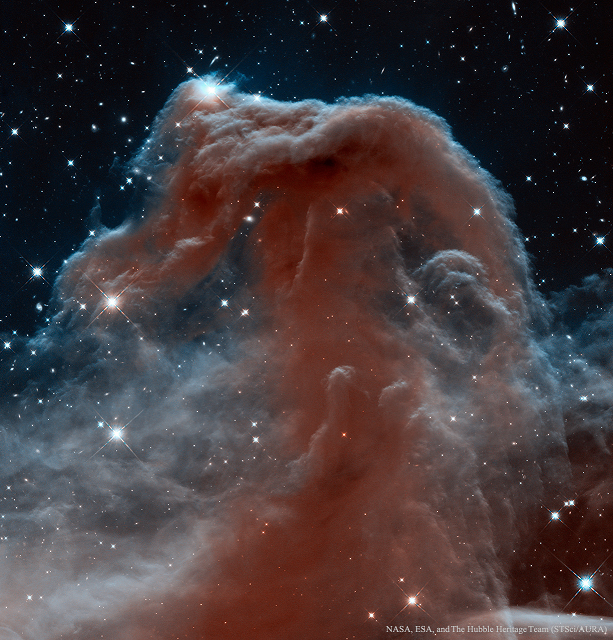
Hubble's
High-Definition Panoramic
View of the Andromeda Galaxy
"The largest NASA Hubble Space Telescope image ever
assembled, this sweeping view of a portion of the Andromeda
galaxy (M31) is the sharpest large composite image ever taken
of our galactic neighbor." This image may be downloaded
free
in various sizes, and there are shot videos to download as well.
The largest, ginormous
image (7038 x 4692, > 32 megapixels)
can crash your browser. "These images should be downloaded,
not viewed with a browser...the number of pixels these images
contain can be problematic for a browser...it may cause your
browser to lock up, or it may crash your computer." Find a pic
in a size you can use and go zooming in. It is astounding.
If the Moon were only 1 pixel - "A Tediously Accurate Scale Model of the Solar System."
So go there and check it out for yourself! Seeing is believing!
US, India to Team Up on Mars Exploration
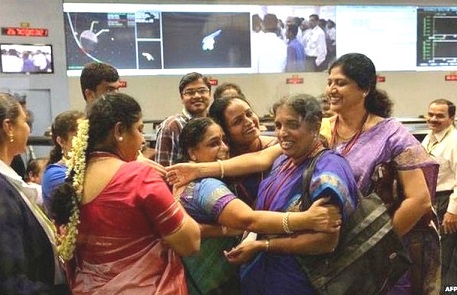
Indian Space Research Organization (ISRO) scientists
and engineers after their orbiter successfully entered
Mars's orbit. Taken at the Spacecraft Control Center,
Bangalore. Original image by Abhishek N. Chinnappa

Source SPACE.com: All about our solar system, outer space and exploration.
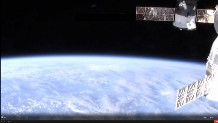 ISS HD Earth Viewing Experiment
"The High Definition Earth Viewing (HDEV) experiment consists of four
cameras that have been attached outside of the ISS. The cameras point down
at Earth at all times, which makes for some breathtaking images. The feed
will sometimes go down as the signal switches between the cameras, and it
is hard to see when the ISS is on the dark side of the planet. If the cameras
are down, the screen will be grey." Credit for description = IFLS
ISS HD Earth Viewing Experiment
"The High Definition Earth Viewing (HDEV) experiment consists of four
cameras that have been attached outside of the ISS. The cameras point down
at Earth at all times, which makes for some breathtaking images. The feed
will sometimes go down as the signal switches between the cameras, and it
is hard to see when the ISS is on the dark side of the planet. If the cameras
are down, the screen will be grey." Credit for description = IFLS
†
![]() Interactive
3D model of Solar System Planets and Night Sky Astronomy for Everybody
/ Discover Solar System with User-friendly application / Real-time
positions and Movements of the Planets and the Moon / Night sky with
Constellations / Space-art graphics / No download required Nice! Also
has cool music.
Interactive
3D model of Solar System Planets and Night Sky Astronomy for Everybody
/ Discover Solar System with User-friendly application / Real-time
positions and Movements of the Planets and the Moon / Night sky with
Constellations / Space-art graphics / No download required Nice! Also
has cool music.
†
![]() Interactive
360 degree map of the heavens A giant 360 degree sky photo. Zoom
in and out, scroll up, scroll down, scroll all the way around! Shows constellations
and stellar objects! It's amazing fun and a great learning tool!
Interactive
360 degree map of the heavens A giant 360 degree sky photo. Zoom
in and out, scroll up, scroll down, scroll all the way around! Shows constellations
and stellar objects! It's amazing fun and a great learning tool!

International Space Station - Current position of the ISS
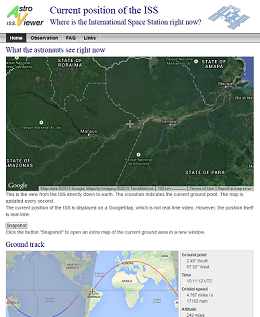
"Where is the International Space Station right now?"
You can find that out with this site! It always shows
"What the astronauts see right now.", which is a straight
down view onto a Google Earth surface. "Ground track"
shows the ISS' position on a map of the world. Both
displays are always on, and are updated by the second.
UTC time, latitude and longitude, speed, and altitude are
all shown. Choose between miles and kilometers. What a
wonderful data source for mathematics story/word problems,
geography projects, and astronomy.
Unfortunately, this site is problematic.
Iit's not up most of the time, for some reason.
Several other sites fill in the gap. They are listed below:
Where
is the ISS? This the ESA (European Space Agency) site. It does the job.
Elegant small site.
ISS Tracker Small site
that still is able to display Latitude and Longitude to 3 digits; it also
shows
speed and altitude. Toggle button lets you choose "English" or metric
measures.
When NASA’s New Horizons spacecraft approached Jupiter
en route to Pluto in 2007, it took this image that was
combined with images from the Chandra X-ray Observatory
of the aurorae at the planet’s poles.
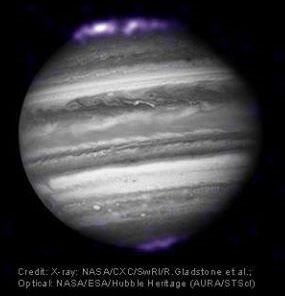
The aurorae are believed to be caused by the ions of the
planet’s magnetic field as they interact with radiation
from the solar wind. Text credit: IFLS
Image credit: X-ray: NASA/CXC/SwRI/R.Gladstone et al.;
Optical: NASA/ESA/Hubble Heritage (AURA/STScI)
High resolution photo of Jupiter
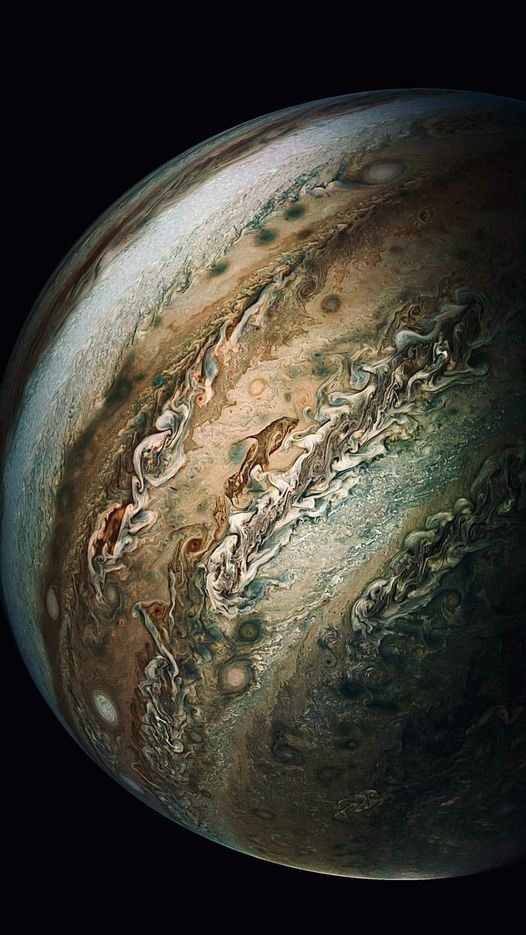
Jupiter in motion. This is a repeating animated gif video of Jupiter, taken from one of the Voyager spacecraft. Fantastic little gif file. You can see the Red Spot and watch different bands moving at different speeds; fastest at the equator, slower at higher latitudes.
Juno
spacecraft enters the gas giant's orbit c|net has a very good article
about spacecraft Juno,
how they got it into orbit, and what NASA wants to study there. This is supplemented
by a short animated video.
How
Juno got to Jupiter from a Tumblr gif, as featured on IFLS's
FB page.
Everything most people want to know, in one nicely done gif.†
![]() Khan Academy "is a not-for-profit
501(c)(3) with the mission of providing a world-class education to anyone,
anywhere...We are complementing Salman (Khan's) ever-growing library with
user-paced exercises--developed as an open source project--allowing the Khan
Academy to become the free classroom for the World." 1800+ videos cover math
from 1 + 1 up through differential equations; Science: Biology, Chemistry,
Physics, Organic Chem, Cosmology, Astronomy;
History; Finance (BIG section!); Test Prep: SAT, GMAT, CAHSEE, IIT JEE. The
videos are wonderful! This is amazing and FREE! (Oh
all right ... Khaaaaaaaaaaaaaan!!)
Khan Academy "is a not-for-profit
501(c)(3) with the mission of providing a world-class education to anyone,
anywhere...We are complementing Salman (Khan's) ever-growing library with
user-paced exercises--developed as an open source project--allowing the Khan
Academy to become the free classroom for the World." 1800+ videos cover math
from 1 + 1 up through differential equations; Science: Biology, Chemistry,
Physics, Organic Chem, Cosmology, Astronomy;
History; Finance (BIG section!); Test Prep: SAT, GMAT, CAHSEE, IIT JEE. The
videos are wonderful! This is amazing and FREE! (Oh
all right ... Khaaaaaaaaaaaaaan!!)
†
Kids Astronomy
section of KidsKnowIt.
Good information at a well organized, if somewhat busy, site.
![]()
Lagrange
Points: The Parking Spaces of Space
"Lagrange Points are places where the forces
acting on an object are perfectly balanced."
Using the analogy of parking a spaceship,
Easy to understand animations explain it all.
Leonids Every November, they come. "The Leonid meteor shower has produced some of the most spectacular meteor displays in history". "The Leonids are a prolific meteor shower associated with the comet Tempel-Tuttle. The Leonids get their name from the location of their radiant in the constellation Leo: the meteors appear to radiate from that point in the sky. (Wikipedia)" This page from Meteor Showers Online has good graphics for the Location of the Leonids For Northern Hemisphere Observers and Location of the Leonids For Southern Hemisphere Observers, plus a long history of the Leonids and us.
†
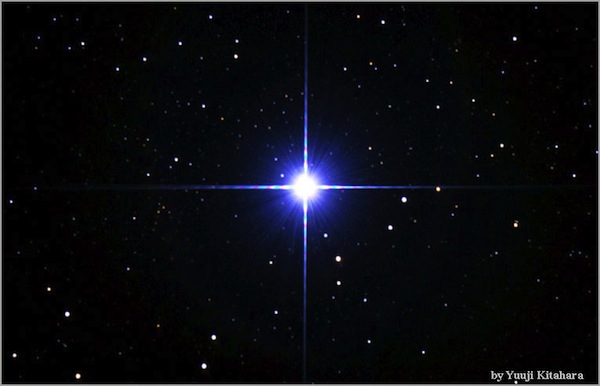
Sirius at Wikipedia plus an X-ray photo of Sirius-a with Sirius-b peeking over its shoulder.
Let's Get 'Sirius' About the Dog Star, Sky's Brightest Twinkler from Indian Country Today Media Network. Facts about Sirius, but mostly tells how the star was regarded in Native American/First Nations cultures and in the myths of various tribal nations. Very good reading. If you don't see the star's photo on their site, click on the graphic.
Life Cycle of the Sun This is a big jpg pic that shows the life of the Sun from birth until death, about 14 billion years. Lots of information in one place. Enjoy!
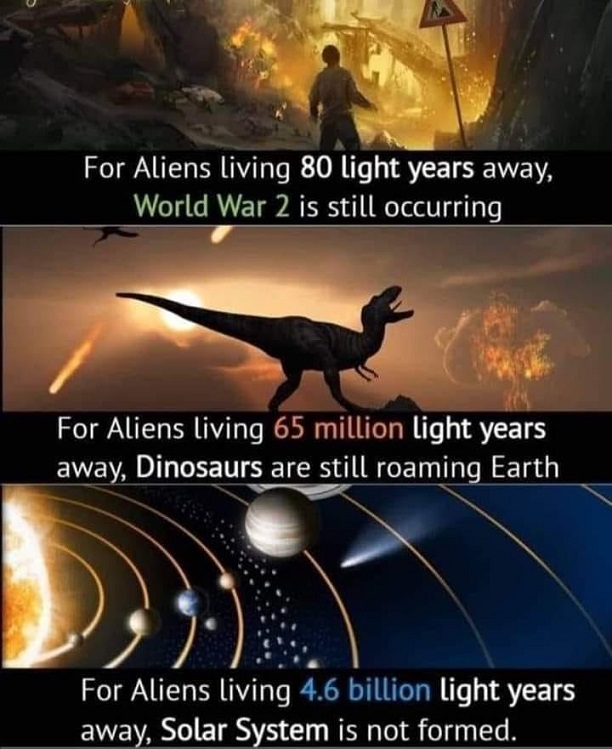
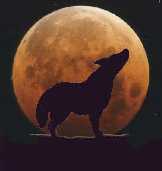 Lunar
Eclipses The Weather Channel's 1-minute video gives all the facts
about a total eclipse of the moon.
Blood Moon 43 second video describes why the moon looks red during a
total eclipse.
Lunar
Eclipses The Weather Channel's 1-minute video gives all the facts
about a total eclipse of the moon.
Blood Moon 43 second video describes why the moon looks red during a
total eclipse.
Space.com has a big page of more information about blood moons, lunar tetrads (NASA video), a calendar of the four lunar eclipses 2014-15, and a great downloadable infographic called Shadow on the Moon that sums all this up in graphic form! Most of this will be valid for the next three eclipses as well!
†
Mars Curiosity Descent - Ultra HD 30fps Smooth-Motion
is 2:54 of excitement, with sound. Starting with heat shield separation and
ending with a self-portrait, this was made by redditor Bard Canning as "a
labor of love". Great YouTube video!
![]() Mars
Flyover "From the highest volcano to the deepest canyon, from
impact craters to ancient river beds and lava flows, this showcase of images
from ESA's Mars Express takes you on an unforgettable journey across the Red
Planet." (quote credit = ESA). "The flyover
explores the grabens, valleys, canyons, mountains and lava flows in unprecedented
detail. These 3D images aid researchers in understanding the climate and development
of Mars." (quote credit = IFLS) This four minute
video is beautiful, as is the music.
Mars
Flyover "From the highest volcano to the deepest canyon, from
impact craters to ancient river beds and lava flows, this showcase of images
from ESA's Mars Express takes you on an unforgettable journey across the Red
Planet." (quote credit = ESA). "The flyover
explores the grabens, valleys, canyons, mountains and lava flows in unprecedented
detail. These 3D images aid researchers in understanding the climate and development
of Mars." (quote credit = IFLS) This four minute
video is beautiful, as is the music.
†
Mars
for Kids has games and activities (online and printouts) for kids.
Coloring, word search, see your weight on Mars, and play the Mars adventure
game! The games are fun and educational.
 Mars
Orbiter Mission of the Indian Space Research Organisation. Move
around these pages and you can watch the historic launch, find out about the
payloads and experiments, view the mission profile, etc. This research mission
will increase our knowledge of Mars and its environment.
Mars
Orbiter Mission of the Indian Space Research Organisation. Move
around these pages and you can watch the historic launch, find out about the
payloads and experiments, view the mission profile, etc. This research mission
will increase our knowledge of Mars and its environment.
†
Meteor Crater Street View is part of Grand Canyon Street View from Google. You can pan around and explore the inside of this fabulous place from two 360 panoramas! Excellent use of Street Maps, go exploring!

Check Out this Incredible Timelapse Video of a Meteorite
Exploding over the Mojave
"Our inherent curiosity about what’s going on outside our own planet
means we’re actually missing out
on natural phenomena that’s just as impressive. So to remind you, here’s
a beautiful timelapse of the
Mojave Desert, shot and edited by astrophotographer Harun Mehmedinovic, that
managed to capture
a meteorite explosion."
The full
rotation of the Moon as seen by
NASA's Lunar Reconnaissance Orbiter
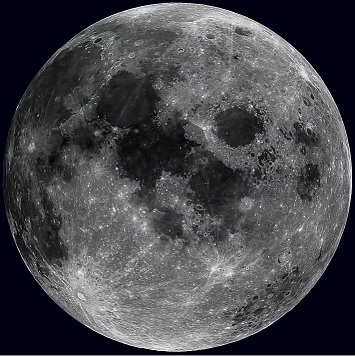
Watch the moon spin around, showing the dark side and the hidden views.
From NASA via reddit via imgur. You can download this as an mp4 file.
How
Many Moons? from NASA Space Place
Inspired by the Great Conjunction of Jupiter & Saturn.
in December 2020. All those little dots were moons!
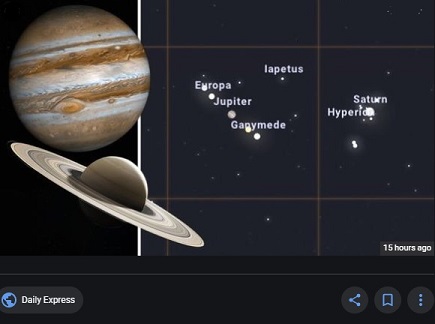
Jupiter and Saturn have 161 moons between them!
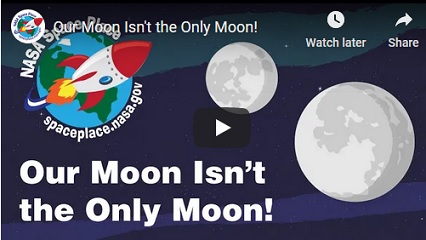
How Many Moons Does Each Planet Have?
Mercury - 0
Venus - 0
Earth - 1
Mars - 2
Jupiter - 79 (53 confirmed, 26 provisional)
Saturn - 62 (53 confirmed, 9 provisional)
Uranus - 27
Neptune - 14
A kid-friendly site with lots of illustrations.
†
 Moon Phases Collection from Curriki. Here is a
collection ready-to-use lesson plans
and their associated activities, links, and downloads for elementary and
middle school. All are aimed at (you guessed it) teaching the monthly
cycle of moon phases; how, where, when, and why. All teachers have to
do is download as necessary, adapt if necessary, and teach it.
Contributed to Curriki by Jessica Flint.
Moon Phases Collection from Curriki. Here is a
collection ready-to-use lesson plans
and their associated activities, links, and downloads for elementary and
middle school. All are aimed at (you guessed it) teaching the monthly
cycle of moon phases; how, where, when, and why. All teachers have to
do is download as necessary, adapt if necessary, and teach it.
Contributed to Curriki by Jessica Flint.
†
†
![]() Moonbase Alpha "A 3-D Immersive NASA Exploration Game. Step into
the role of an explorer in a futuristic lunar settlement...Moonbase Alpha
is the first of two commercial-quality NASA games developed in partnership
with commercial game developers." Looks great!
Moonbase Alpha "A 3-D Immersive NASA Exploration Game. Step into
the role of an explorer in a futuristic lunar settlement...Moonbase Alpha
is the first of two commercial-quality NASA games developed in partnership
with commercial game developers." Looks great!
†
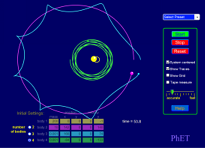 My
Solar System is another in the always amazing series of Free
simulations from PhET at CU Boulder.
In this Flash sim, students build a solar system and try it out. Planets might
hit each other and the sun, or get flung off into space. This is probably
what happens when real solar systems are first forming. "Build your own
system of heavenly bodies and watch the gravitational ballet. With this orbit
simulator, you can set initial positions, velocities, and masses of 2, 3,
or 4 bodies, and then see them orbit each other." Your job is to try
to make a stable system. Your choice of several Preset (canned) solar system
setups, or make your own with 1 - 3 planets, moons, etc. Vary their distances
from the sun, their mass, position, and velocity.
My
Solar System is another in the always amazing series of Free
simulations from PhET at CU Boulder.
In this Flash sim, students build a solar system and try it out. Planets might
hit each other and the sun, or get flung off into space. This is probably
what happens when real solar systems are first forming. "Build your own
system of heavenly bodies and watch the gravitational ballet. With this orbit
simulator, you can set initial positions, velocities, and masses of 2, 3,
or 4 bodies, and then see them orbit each other." Your job is to try
to make a stable system. Your choice of several Preset (canned) solar system
setups, or make your own with 1 - 3 planets, moons, etc. Vary their distances
from the sun, their mass, position, and velocity.
†
NASA Curiosity Mars Rover This is the central site for Curiosity, the Mars rover. Videos, photos, mission updates, tracking the rover's travels, it all starts here!
NASA
Dawn mission infographic All about the Dawn mission, the spacecraft, and
its mission to Vesta and Ceres.
Brought to us via Space.com
NASA’s Hubble Finds Pluto’s Moons Tumbling in Absolute Chaos Pluto and its closest and largest moon, Charon make up a double planet system. "Pluto and Charon are called a double planet because they share a common center of gravity located in the space between the bodies. Their variable gravitational field sends the smaller moons tumbling erratically. The effect is strengthened by the football-like, rather than spherical, shape of the moons." There are two expandable-to-full-screen infographics attached: One shows closeups of the potato-shaped moons, the other "shows the scale and comparative brightness of Pluto’s small satellites". Click on them to see more. Here are some other infographics of Pluto & Caron and their moons.
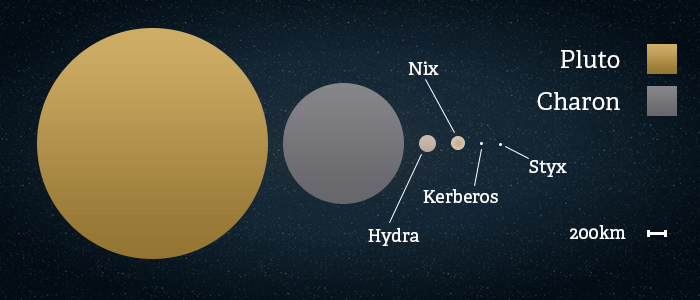
NASA Images This is the new NASA image archive site, which catalogues 100,000 stunning images! All the space photos NASA has posted are here. We looked at at a few hundred and were amazed. A fantastic reference source, or just look at the thousands of photos!
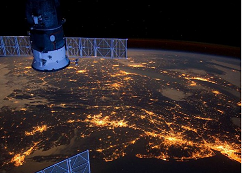
NASA Instagrams "Explore the universe and discover our home planet with the official NASA Instagram account." 1,134 posts and 2.4m followers enjoying them. The usual stunning pix you expect from NASA.
NASA/JPL'S Mars Orbiter finds ESA Mars rover's crash site
The article discusses the tragic failure of the prototype's attempt to land. The braking rockets quit firing much too soon.
JPL's gif image flashes between before and after shots of the same area. Large and Very Large images of the area may be downloaded from this page.
This is how we learn. When the ESA does the full-scale mission in 2020, this problem, at least, will have been fixed.
†
NASA Mars Rover Missions This is the main site for Opportunity and Spirit. You can get to all the Mars Rover photos from here. Also has links Mars for Kids and Mars for Educators.
†
NASA Multimedia: Video Gallery So many goodies in NASA Multimedia! The Video Gallery has oodles of animations, some movies, others animated, all great and loaded with information. The hottest ones right now (February 2013) are about the flight path of Asteroid 2012 DA14, which will fly by Earth on February 15th! Actually between the Earth and many satellites! Short video (00:43) only shows the flyby path. Longer video (2:03) has diagrams and explanations of where the asteroid will pass by, where the satellites are, and why we are safe. The longest video (4:22) is the most educational, has the most background information, which helps to put things in context.
†
NASA Space Place "Welcome to the Space Place! Come on in and check out our games, animations, projects, and fun facts about Earth, space and technology."
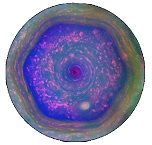 NASA's
Cassini Spacecraft Obtains Best Views of Saturn Hexagon The Hexagon
of Saturn - sounds like a John Carter of Mars scifi novel. It's real. The
north pole of Saturn has a six-sided jet stream (hexagonal = "looks
like a honeycomb"). "Spanning about 20,000 miles (30,000 kilometers)
across, the hexagon is a wavy jet stream of 200-mile-per-hour winds (about
322 kilometers per hour) with a massive, rotating storm at the center. There
is no weather feature exactly like this anywhere else in the solar system."
Look at the video and gif graphics at the site to find out more.
NASA's
Cassini Spacecraft Obtains Best Views of Saturn Hexagon The Hexagon
of Saturn - sounds like a John Carter of Mars scifi novel. It's real. The
north pole of Saturn has a six-sided jet stream (hexagonal = "looks
like a honeycomb"). "Spanning about 20,000 miles (30,000 kilometers)
across, the hexagon is a wavy jet stream of 200-mile-per-hour winds (about
322 kilometers per hour) with a massive, rotating storm at the center. There
is no weather feature exactly like this anywhere else in the solar system."
Look at the video and gif graphics at the site to find out more.
![]() NASA's
Eyes Astronomical virtual visualizations
for all! From JPL at CalTech. It's kind of a download plus online program.
You need to download the part for your computer in order to see all the rest.
"This visualization tool requires a quick one-time download and install."
Three programs in one:
NASA's
Eyes Astronomical virtual visualizations
for all! From JPL at CalTech. It's kind of a download plus online program.
You need to download the part for your computer in order to see all the rest.
"This visualization tool requires a quick one-time download and install."
Three programs in one:
Of course each one has plenty of options, and lots of things to see and do.
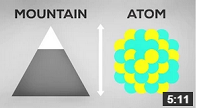 Neutron
Stars Explained (Atoms As Big As Mountains — Neutron Stars Explained)
Another great educational video from Kurzgesagt.
Very good and not overly complicated explanation of this amazing phenomenon.
"Neutron Stars are some of the strangest things in the Universe. Not
quite massive enough to become black holes, they are basically atoms as big
as mountains with properties so extreme it's mind-blowing. And if you get
too close to a neutron star you are in big trouble…"
Neutron
Stars Explained (Atoms As Big As Mountains — Neutron Stars Explained)
Another great educational video from Kurzgesagt.
Very good and not overly complicated explanation of this amazing phenomenon.
"Neutron Stars are some of the strangest things in the Universe. Not
quite massive enough to become black holes, they are basically atoms as big
as mountains with properties so extreme it's mind-blowing. And if you get
too close to a neutron star you are in big trouble…"
New
Horizons encounter with Pluto All about the flyby and what the spacecraft
discovers.

Source SPACE.com: All about our solar system,
outer space and exploration.
Newly discovered dwarf planet is almost as big as Pluto Temporarily named 2007 OR10, it is the third biggest dwarf planet in our solar system—and the largest unnamed planet of any kind within our solar system. You can find out why it was so hard to find the new dwarf by reading the linked article from Gizmodo, with its pix and videos.
November sky highlights: Orion, Leonids meteor shower and Venus. These highlights are for the Southern Hemisphere - Australia, New Zealand, South Pacific, South Africa, South America; NOT the Northern Hemisphere. Native Australian names for constellations are used. Great photo of Orion and good description of the sky as the old people saw it.
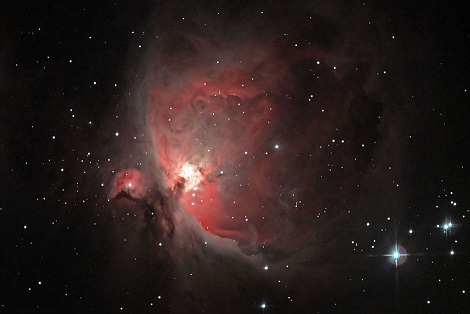
""If you watch the eastern horizon about 9:00pm in mid-November,
you will see Larnankurruk, the
young maidens, dancing above the horizon.
They are followed by old man Gellarlec,
beating time and singing, and then finally rising over the horizon,
Kulkunbulla, the two young men dancing
for Larnankurruk."
The splendor of the Orion Nebula
Click on thumbnail or link to see the 900 x 790 original!
captured from Badlands National Park by
Eden Bhatta, is the winning fan photo of the week!
OSIRIS-REx
Samples Asteroid Bennu
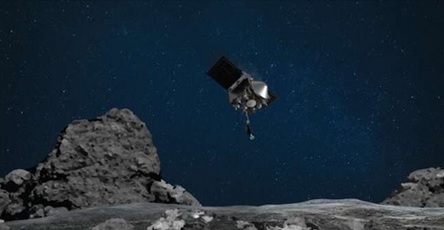
![]()

Snopes
discusses this statement.
Perseid meteor
shower creates dazzling night sky
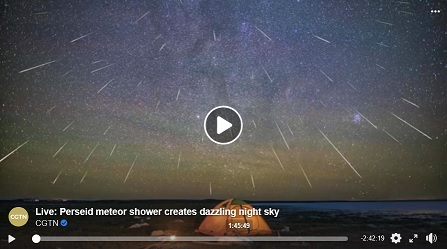
It's Perseids time again!
Picture of the Sun through a lens that allows only a specific wavelength.
Click on the photo to see a much larger version.
†
Phoenix Mars Mission Wow! We have a lander on the North Pole of Mars! This is the education section of the official site. There's Mars 101, five sections of info about Mars. Just for Kids has the fun stuff and activities (and Steve the Cat.) Phoenix Classroom has lesson plans, activities, and resources. The Web Exhibit is worth watching, although the Flash video was rather small and hard to read. Pictures from Mars are accessible from the Phoenix home page.
†
"The Photopic Sky Survey is a 5,000 megapixel photograph of the entire night sky stitched together from 37,440 exposures. Large in size and scope, it portrays a world far beyond the one beneath our feet and reveals our familiar Milky Way with unfamiliar clarity." HUGE 360 degree panoramic photo with amazing detail. Zoom in/out, scroll left/right/up/down, with or without constellations shown. Ooo/ahhh!
Photos
from Perseverance's mission to Mars
This slide show (20 frames) was taken by Mars lander Perseverance
as it rolled around the surface of Mars taking pictures like a tourist!
![]()
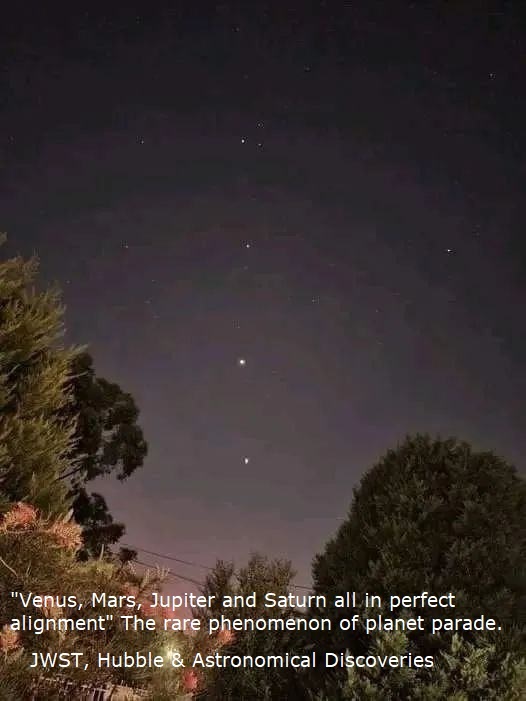
Planet X - It came from beyond Neptune! "Astronomers say a Neptune-sized planet lurks beyond Pluto. The solar system appears to have a new ninth planet. Today, two scientists announced evidence that a body nearly the size of Neptune—but as yet unseen—orbits the sun every 15,000 years." Read the article and see for yourself.
†
Planets of the Solar System "What my site offers students that other solar system sites don't is a top-notch 3D interactive solar system model. (This is a great tool for students to visualize the solar system, and it's just plain fun to play around with.) Of course, my site also offers images, facts, data, and up-to-date solar system news. What you won't find on my site is a bunch of ads that detract from the educational material." This was way cool, good info, nice music, great graphical interface, just fun to play with!
†
Planets for Kids is
an astronomy site made by a nine year old kid for kids! Lots of good and easy
to understand information. Facts that may be hard for a student to get elsewhere
are in here. The site is quite colorful and well laid out, so it is easy to
find what you need to do a report for school! Kudos to young Stephen and his
dad, of Dublin, Ireland, for creating this site!
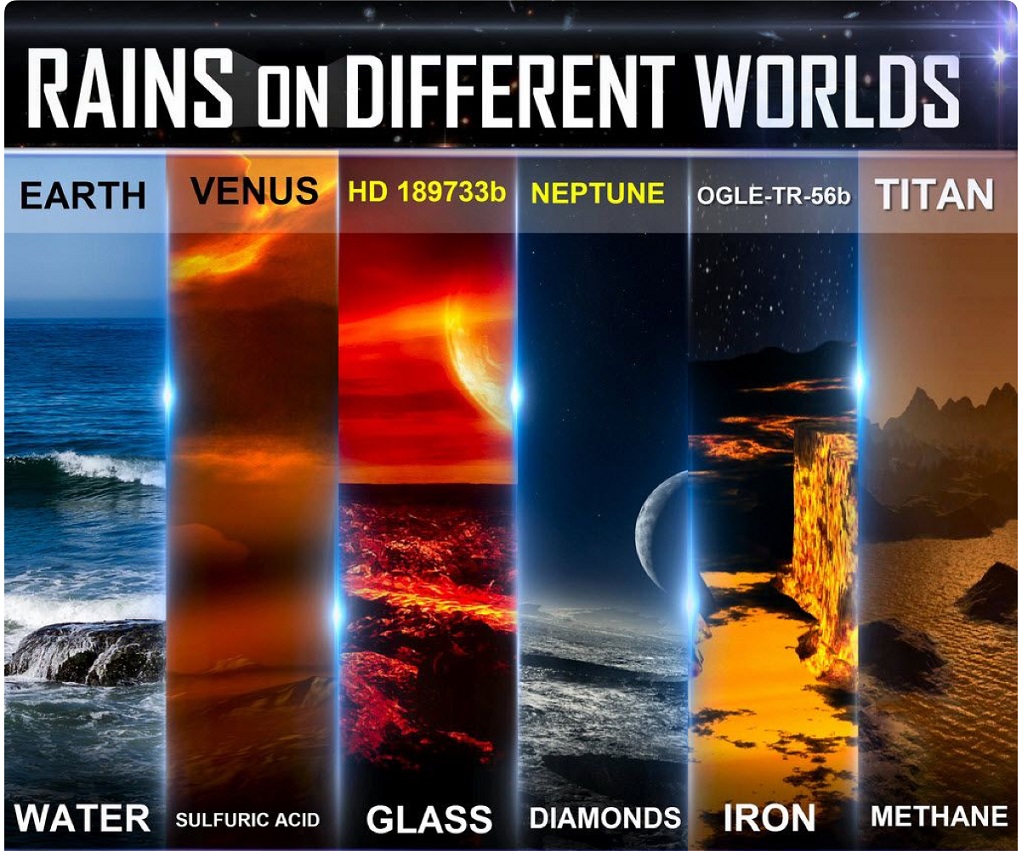
The states of matter we know on Earth are NOT the only ones there are!
Where it's COLD enough, water is a rock (ice)! Methane
is a liquid, or even a solid! Same for nitrogen and oxygen!
Where it's HOT enough, it can rain iron, or liquid diamonds, or glass!
Rosetta’s lander Philae wakes up from hibernation It's awake and sending signals! CNN has a lot of information in its story including a slideshow. Just wait until August, when this comet gets close to the sun!
Sizing up the Kuiper belt "With the help of students and amateur astronomers, scientists are learning more about the unusual objects, such as the Kuiper belt, at the edge of our solar system." The RECON organization's volunteer astronomers are helping to find out the size of Kuiper Belt objects (KBOs for short). The volunteers record and pass on "events where a KBO passes between Earth and some distant object, such as a star." This is called an occultation*. Using the already-known distance from Earth to the object, scientists can use the time of occultation to work out its diameter. This is a big step towards understanding what the object is made of (ice, rock). There's a video of an occultation and a short but useful glossary. This site is a page of the Society for Science & the Public's big, excellent web pages. PS Their Student Resources pages have a lot of resources and "recipes" for Science Projects!
†* occultation Any event where an object is briefly hidden from view when another object passes in front of it. In astronomy, this usually refers to objects such as asteroids passing in front of a star.
Sky This is the "sky" portion of Sea and Sky's site. A very good resource, the site has good information on the Messier Catalog, constellations, photo galleries, tours of the solar system, an illustrated glossary, and games. We can't recommend the "Sky News" section for kids' viewing, but the rest of the site is excellent. Someone did a lot of work to gather and organize all this information.
†
![]() Sky Marvels This
site will knock your socks off! The whole site was made using the awesome
free astronomy program, Celestia! The best
way to explore Sky Marvels is to just dive in, look around, see what you like!
It's akmost fractal in the number of side trails you can explore. Very educational
and fun, too! Thank you, Gary M. Winter, for developing and posting this marvel!
Sky Marvels This
site will knock your socks off! The whole site was made using the awesome
free astronomy program, Celestia! The best
way to explore Sky Marvels is to just dive in, look around, see what you like!
It's akmost fractal in the number of side trails you can explore. Very educational
and fun, too! Thank you, Gary M. Winter, for developing and posting this marvel!
Solar System from Cookie Here is a four-minute video of the solar system for elementary students. Colorful and good special effects. All the basic info is in here and it is easy to understand. Still lists Pluto as a planet, though.
†
Solar System Facts "Just the facts." and plenty of them. Fifteen pages - one for each planet, the Moon, the Sun, asteroids, dwarf planets, and comets. Each page has a photo of its planet and at least 12 interesting facts, written at an upper elementary level. There's also a list of general solar system facts on the main page. Thanks to the webmaster of this site for the email about it!
†
Covers anything
related to space. Great photo galleries and videos. Sections for: Spaceflight,
Science & Astronomy, Search for Life, Skywatching, Tech, and more. Stay
up to date on space news and enjoy all those amazing photo galleries!
Space Facts "is a growing collection of interesting facts about space, covering the planets, solar system, space exploration, galaxies and more." This site is full of awesome facts and great pictures!! It has sections on Cool Space Facts, all the Planets, the Dwarf Planets, the Sun, the Moon, the Andromeda Galaxy, a blog full of photos and news, and the Solar System as a whole. Scroll and click your way through the photo and graphics Gallery, o unbeliever, and be amazed.
†
Space Science from Extreme Science. The space section of the larger site.
S5 0014+81, The largest known supermassive black hole compared to our solar system
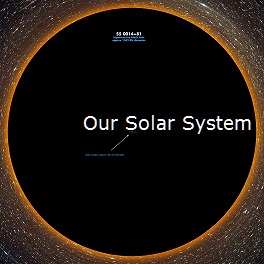 Click the link above for the video of this monster black hole,
Click the link above for the video of this monster black hole,
click the photo (left) to see it full-sized!
This 2:33 video shows the sizes of solar system planets
and huge stars.
"There are several videos circulating showing a comparison of the largest
stars.
I like these kind of things, and I wanted to try one myself."
†
StarChild Nice site for beginning astronomers from NASA. Good information and cute, too.
†
StarDate
Yep, it's the same people who have the show on National Public Radio!
Stargazing, Resources, Teachers, more. Link opens into the Resources section,
with links and a big glossary!
†
Stellar
Evolution is a fine repeating Flash video of the life and death of
a star.
Good for about 8th grade and up. Discusses stellar decay, elements.
From Valdosta State University, Valdosta, Georgia, USA.
†
![]() Stellarium "is a free open
source planetarium for your computer. It shows a realistic sky in 3D, just like
what you see with the naked eye, binoculars or a telescope. It is being used
in planetarium projectors. Just set your coordinates and go." We love the constellation
settings that let you show the mythological chracters around the bowl of the
sky! This is in the same genre as Celestia.
Stellarium "is a free open
source planetarium for your computer. It shows a realistic sky in 3D, just like
what you see with the naked eye, binoculars or a telescope. It is being used
in planetarium projectors. Just set your coordinates and go." We love the constellation
settings that let you show the mythological chracters around the bowl of the
sky! This is in the same genre as Celestia.
Stunning Aurora Borealis from Space in Ultra-High Definition (4K) super cool five minute video from NASA. "The auroras, or polar lights, are basically natural light shows. They are seen mainly in the Arctic and Antarctic regions and are created when electrically charged electrons and protons in the Earth's magnetic field smash into the neutral atoms found in the upper atmosphere. This produces bright, eerie lights that streak across the sky. The NASA video shows the ghostly polar auroras hovering over the planet with an iridescent green glow."
Supermoon Biggest in 70 Years The closest full moon in the 21st century will be here on November 14th. This supermoon will appear to be the biggest moon of the 21st century, at least until 2034. Pictures of the big 2014 supermoon from around the world are shown for comparison. How the supermoon "works" is discussed - perigee and apogee explained. Learn the definition of syzygy.
The Nine 8
Planets
A good informational site that adults and kids have used for
years. Scroll down to Contents to see what they have.
†
The Nine
8 Planets Just for Kids The elementary level version.
They used Science (COMIC) from ScienceDump "This is a comic drawn by ZenPencils. The quote is from Phil Plait taken from a talk he gave at a student science fair. Apparently, the night before the speech Phil didn’t know what he was going to say, until he saw a news story, full of the normal psuedo-science stuff they so often are. He then wrote this speech. One thing is for certain, the speech (and the comic) will help reinvigorate your love of science."
These 14 Images Of The Sun May Be The Most Spectacular Ever Snapped "NASA's Solar Dynamics Observatory (SDO) spacecraft is constantly taking photos of the sun. One of the instruments aboard the spacecraft, the four-telescope Atmospheric Imaging Assembly, is especially prolific; it takes a mind-boggling 57,000 photos a day. And at 12:49 p.m. ET on Jan. 19, 2015, it snapped its 100 millionth photo.To mark the occasion, a pair of scientists involved with the mission selected their favorite SDO images taken so far. Scroll down to see the 100 millionth image and a "mosaic" image captured on the same day--followed by the scientists' favorites."
This
is the Most Detailed Map of the Universe to Date This map of the universe
spans more than 500 million light-years and contains more than 100,000 galaxies.
4:11 video is narrated and talks about the different high points on the journey.
The graphics are cool and make others drool.
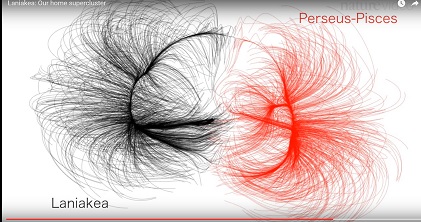
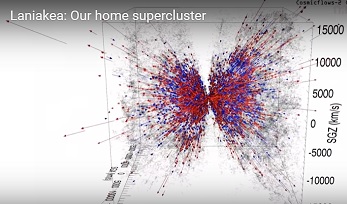
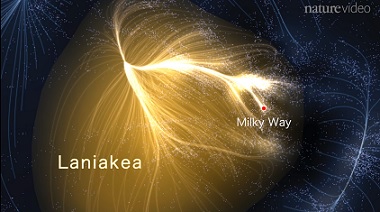
This
is What Photos of the Night Sky Would Look Like
if the Andromeda Galaxy Were Brighter
article by Michael Zhang in PetaPixel.
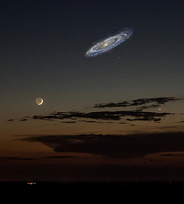
Photo is by Tom Buckley-Houston, who is quoted and linked to.
This is a cropped and shrunk version. Click on it to see the Big One.
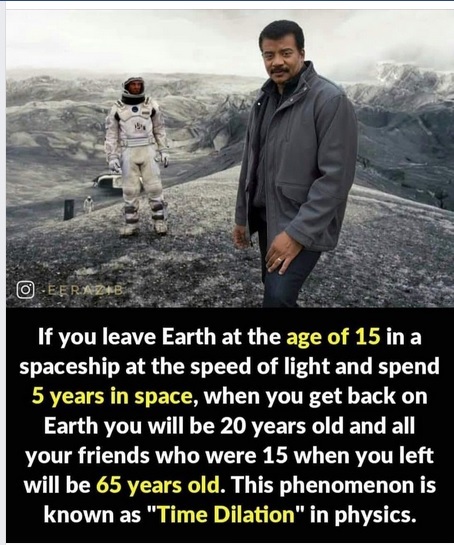
2016 Transit of Mercury Early in the morning of May 9th, Mercury cruised across the face of the Sun. When a planet does this, it's called a transit. This three-minute narrated video from NASA tells you all about it.
NASA Captures Mercury Transit Time-lapse This video condenses seven hours into 2 minutes. Watch as Mercury is backlit against the Sun.
†
UDF SkyWalker - the Hubble telescope Deep Field interactive site! Use the small field at the top left to scroll around in the larger field. Cool!
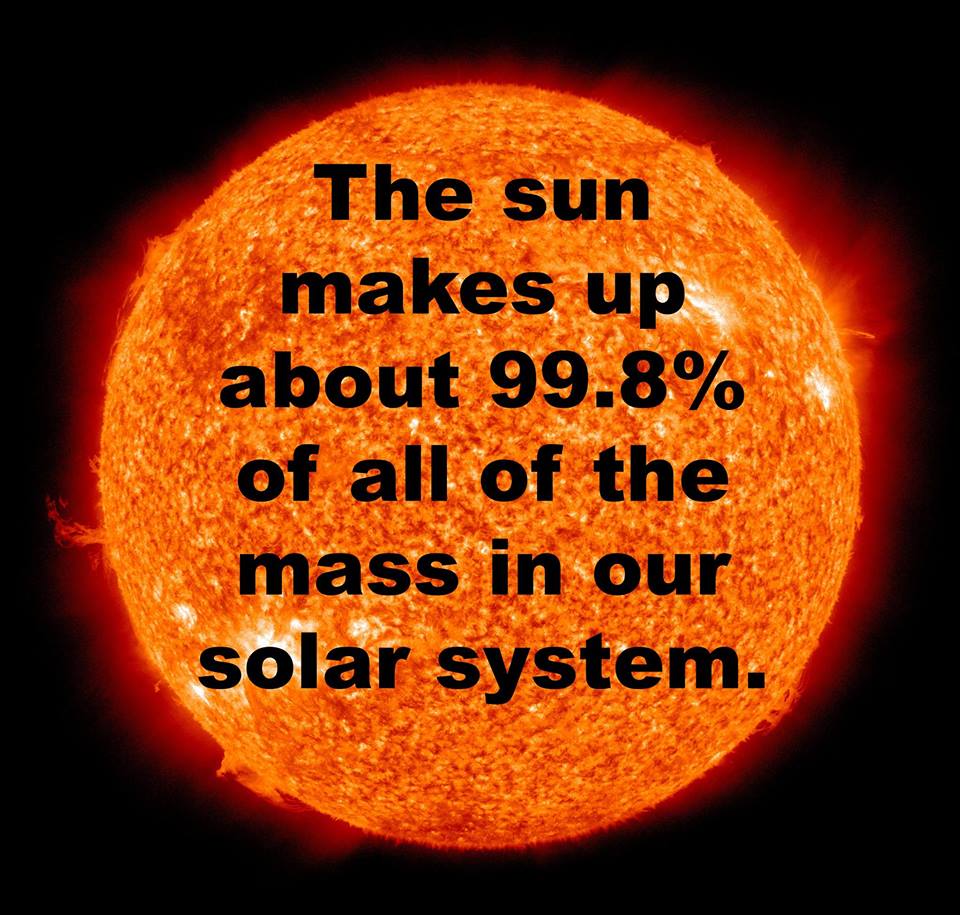
Weight vs. Mass What is mass? How is it different from weight? Mass is a measurement of the amount of matter something contains, while Weight is the measurement of the pull of gravity on an object. Mass is measured by using a balance comparing a known amount of matter to an unknown amount of matter. Weight is measured on a scale. The Mass of an object doesn't change when an object's location changes. Weight, on the other hand, does change with location.
†
The Universe within 1 billion Light Years - The Neighbouring Superclusters. "Galaxies and clusters of galaxies are not uniformly distributed in the Universe, instead they collect into vast clusters and sheets and walls of galaxies interspersed with large voids in which very few galaxies seem to exist. The map above shows many of these superclusters including the Virgo supercluster - the minor supercluster of which our galaxy is just a minor member. The entire map is approximately 7 percent of the diameter of the entire visible Universe." There are also maps of other superclusters.
†
Universe Epic Zoom Out (YouTube)
American Museum of Natural History video with techno soundtrack.
"Absolutely stunning", this is seven minutes of awesome wonder
as you zoom out to the edge of the known universe, and back again.
Really puts Earth in perspective for students.
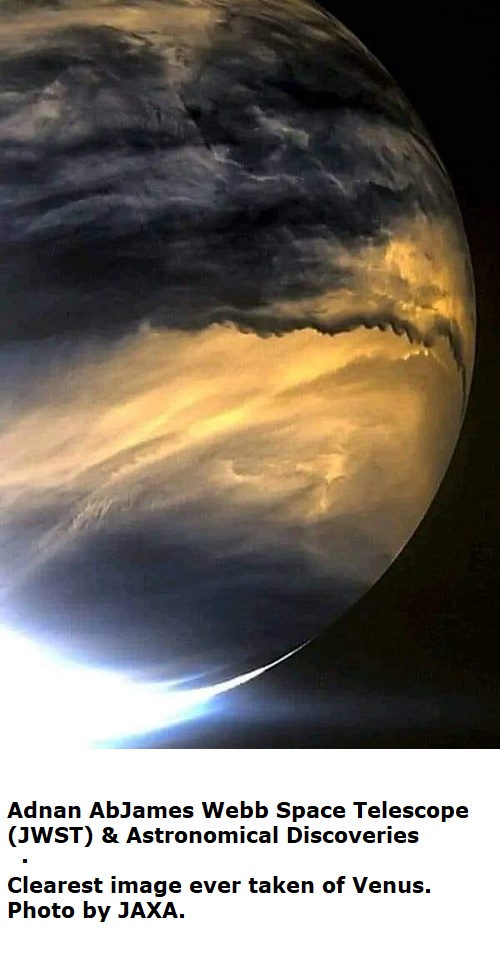
†
†
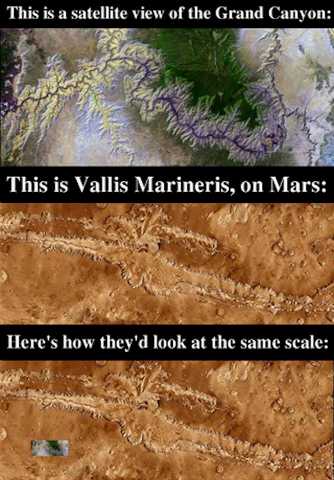
taken by Cassini probe. Click on the photo
to
see a video with much larger views!
Visible Earth NASA has listed
their favorite photos of earth
from space. Many cool photos, worth
checking them out.
Waste in Space
Infographic details the growing menace
of leftovers in orbit. Two to three times
a day, a satellite
has a brush with death from kamikaze space debris.
1,000
times a day, satellites come within five miles of being hit.
Learn all about
it by reading this great big (1600 X 900) graphic.
†
We Choose The Moon
is an interactive experience recreating the historic Apollo 11 mission
to the Moon in real time. Once where only three men made the trip, now
millions can. Live event begins 8:02 AM EDT July 16, 2009, with launch
at 9:32 a.m., exactly 40 years after Apollo 11 lifted off. Going in
Astronomy, Social Studies, and Technology.
†
Welcome to the Planets This NASA site has plenty of photos and facts about the planets. Colorful and nicely laid out.
What's Next for NASA: Planned Missions Through 2030 Big online poster lists and describes all the planned missions.
.jpg)
Your Age on Other Worlds Your age in years is different on different planets! Find out why at this site.
†
Your Place in the Universe! is a large, expandable graphic from South Africa. From left to right it starts out in your house and moves out into the galaxies. Lots of good explanations in between the pix. Kids love big colorful pictures they can explore.
†
Your Weight On Other Worlds Kids are amazed at what they would weigh (or not weigh) on different planets!
†
Zoom Astronomy "is a comprehensive on-line site about space and astronomy. It is designed for people of all ages and levels of comprehension. It has an easy-to-use structure that allows readers to start at a basic level on each topic and then to progress to much more advanced information as desired, simply by clicking on links." Extremely good site, typical of Zoom

![]()
"Keep looking
up!" - Jack Horkheimer
![]() to page top†
to page top† ![]()
![]() to Good Sites for Kids
to Good Sites for Kids
Powered by ![]() The World's
#1 Web Host
The World's
#1 Web Host